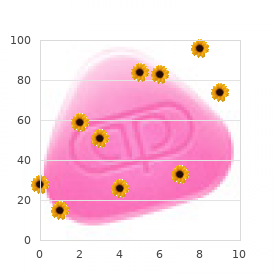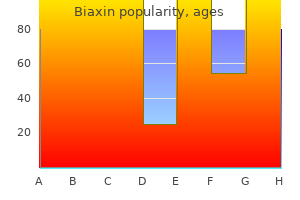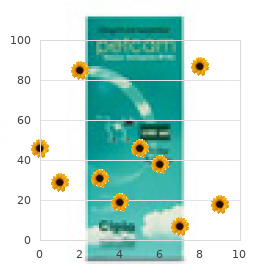"Buy 250mg biaxin overnight delivery, gastritis symptoms for dogs".
By: W. Jerek, M.A.S., M.D.
Clinical Director, Hackensack Meridian School of Medicine at Seton Hall University
Growing evidence suggests that autoantibodies to neuronal or endothelial targets in psychiatric disorders exist and may be pathogenic gastritis chronic erosive discount 250 mg biaxin. Metal dyshomeostasis causes or has been implicated in many neurodegenerative diseases atrophische gastritis definition buy biaxin online from canada. Metal flux across the blood-brain barrier (the primary route of brain metal uptake) and the choroid plexuses as well as sensory nerve metal uptake from the nasal cavity are reviewed acute gastritis definition order biaxin 500mg visa. Transporters that have been described at the blood-brain barrier are listed to illustrate the extensive possibilities for moving substances into and out of the brain gastritis in the antrum buy generic biaxin line. The ability of manganese to produce a parkinsonism-like syndrome, evidence suggesting manganese uptake by transferrin- and non-transferrin-dependent mechanisms which may include store-operated calcium channels, and the lack of transporter-mediated manganese brain efflux, are discussed. The evidence for transferrin-dependent and independent mechanisms of brain iron uptake is presented. Brain zinc uptake is facilitated by L- and D-histidine, but a transporter, if involved, has not been identified. Methyl mercury can form a complex with L-cysteine that mimics methionine, enabling its transport by the L system. The putative roles of zinc transporters, ZnT and Zip, in regulating brain zinc are discussed. Although brain uptake mechanisms for some metals have been identified, metal efflux from the brain has received little attention, preventing integration of all processes that contribute to brain metal concentrations. Rabbits are particularly sensitive to aluminum neurotoxicity and they develop severe neurological changes that are dependent on dose, age and route of administration. In the present review we discuss data from our laboratory and others, on the effects of aluminum on behaviour, neurologic function and morphology, using aluminum administered to rabbits via different routes. Finally, we will examine data on the possible cellular mechanisms underlying aluminum neurotoxicity, and potential neuroprotective strategies against aluminum toxicity. Some aspects of astroglial functions and aluminum implications for neurodegeneration. It is now known that, rather than being a mere supporter of neurons, astroglia are actively involved in their modulation. The aluminum hypothesis seems to have been laid to rest, probably due to contradictory epidemiological reports on it as a causative factor of neurodegenerative diseases. Surprisingly, newer scientific evidences continue to appear and recent findings have implicated astrocytes as the principal target of its toxic action. In view of the likely detrimental effects of the interaction between these two infamous partners in neuroscience on neurons and nervous system, we have reviewed some aspects of glia-neuron interaction and discussed the implications of aluminum-impaired astrocytic functions on neurodegeneration. Effects of aluminum on the nervous system and its possible link with neurodegenerative diseases. Department of Analytical Chemistry, School of Pharmaceutical Sciences, Kyushu University of Health and Welfare, Nobeoka-city, Miyazaki, 882-8508, Japan. Al causes the accumulation of tau protein and amyloid-beta protein in experimental animals. Furthermore, a relationship between aluminum and the iron-homeostasis or calcium-homeostasis has been suggested. Based on these findings, the characteristics of aluminum neurotoxicity are reviewed, and the potential link between aluminum and neurodegenerative diseases is reconsidered. Data indicate that aluminum contaminates much of the raw material used to manufacture solutions used for intravenous nutritional support of hospitalized and ambulatory patients, and that pharmaceutical manufacturers have only recently obtained the technology necessary to detect aluminum contamination of their products. As a result, aluminum bypassed normal barriers and entered the blood, accumulating in tissues such as bone, liver and the central nervous system with toxic consequences. However, it is known that there is a causal role for aluminum in dialysis encephalopathy, microcytic anemia, and osteomalacia. The exact mechanism of aluminum toxicity is not known but accumulating evidence suggests that the metal can potentiate oxidative and inflammatory events, eventually leading to tissue damage. This review encompasses the general toxicology of aluminum with emphasis on the potential mechanisms by which it may accelerate the progression of chronic age-related neurodegenerative disorders. It seems mandatory to evaluate possible long-term adverse effects induced by this compound, because this issue has not been addressed (in the past, aluminum hydroxide was believed to be cleared quickly from the body). If safety concerns about the long-term effects of aluminum hydroxide are confirmed, novel and alternative vaccine adjuvants to rescue vaccine-based strategies should be proposed to ensure the enormous benefit for public health that these vaccines provide worldwide.


Most of the observable species differences gastritis y colitis purchase biaxin 250mg mastercard, as far as the head is concerned gastritis diet journal template biaxin 500 mg, depend on variations in the facial part of the skull gastritis je purchase biaxin 250mg online. The caudal and dorsal walls of the cranium are formed by the occipital gastritis diet xenadrine order biaxin 500mg fast delivery, parietal, interparietal, and frontal bones. In domestic animals that possess them, the horns have at their core bony projections that arise from the frontal bones. Laterally and ventrally, the walls are formed by the temporal bones, which contain the middle and inner ears, and the sphenoid bone, which supports the brain and pituitary gland. Rostrally, the unpaired ethmoid bone presents numerous openings for passage of the olfactory nerves associated with the sense of smell. The facial portion of the skull can be divided into orbital, nasal, and oral regions. The orbit is surrounded by portions of the frontal, lacrimal, and zygomatic bones. Frontal, zygomatic, and temporal bones all participate in the formation of the prominent zygomatic arch that borders the ventral and caudal parts of the orbit. The air passages through the nasal part of the skull are bounded dorsally by the nasal bones, laterally by the maxillae and incisive bones, and ventrally by the palatine processes of the maxillae, incisive, and palatine bones. Right and left nasal passages are separated longitudinally by the vomer bone and a cartilaginous and boney septum. Scroll-like conchae (turbinate bones) arise from the lateral walls of the nasal cavity and project into the nasal passages. The conchae are covered with highly vascular mucous membrane that helps warm and humidify the inspired air; conchae in the caudal parts of the nasal cavity feature the olfactory epithelium, which contains the nerve cells specialized to detect odors. Communicating with the nasal cavity are diverticula, known as paranasal sinuses, within some of the bones. The bones that may contain these sinuses include the frontal, maxillary, nasal, sphenoid, and palatine bones. Because it features a diverticulum that extends into the cornual process, the frontal sinus in cattle may be exposed by dehorning mature animals. The oral (mouth) portion of the skull is roofed by the maxillae and incisive bones and Parietal Temporal Frontal Lacrimal Zygomatic Nasal Maxilla Incisive Mandible Frontal Temporal Lacrimal Zygomatic Nasal Maxilla Incisive Mandible Figure 4-4. The stylohyoid bones articulate with the styloid processes of the skull, and the thyrohyoid bones articulate with the larynx. The prominent lingual process extends into the base of the tongue and affords an attachment site for some lingual muscles. The maxillae and incisive bones contain the teeth of the upper dental arcade (although the incisive bones lack teeth in ruminants). The mandible pivots on a fossa of the temporal bone just rostral to the opening of the ear. The mandible contains all of the lower teeth and gives attachment to some of the muscles associated with chewing and swallowing. It lies between the right and left portions of the mandible and is attached to the styloid process of each temporal bone. The A vertebral formula for a given species consists of the letter symbol for each region followed by the number of vertebrae in that region in the given species. The parts of a typical vertebra include the body, the arch, and the processes. The body is a cylindrical mass forming the ventral part of the vertebra and floor of the vertebral foramen. Dorsally, the arch completes the vertebral foramen, which contains the spinal cord. Cranial and caudal articular processes form joints between adjacent vertebrae; in the thoracic region they also form joints with the ribs. In the horse, the very tall spinous processes of the first few thoracic vertebrae form a dorsal prominence called the withers.

Monocytes are immune agents dispatched by the spleen and are the first responders to trouble sites gastritis diet chocolate discount biaxin on line. For example gastritis diet Ē¶“Ō¾„■ĻŃ generic 500mg biaxin free shipping, erythrocyte blood types define compatibility for transfusion gastritis cancer effective 500mg biaxin, according to the presence of A gastritis diet popcorn order discount biaxin line, B and Rh antigens, but these characteristics have little to do with hemotoxicity. Some hormones are homeostatic control systems that keep constant the concentration of hemoglobin. Formation of Blood Cells the 5 to 6 liters of blood in the human body originate from undifferentiated mesenchymal cells or pluripotent stem cells found primarily in the bone marrow (long bones, ribs, sternum) and, in some species, in the spleen. These stem cells give rise to erythrocytes, a series of "white" blood cells or leukocytes, and thrombocytes or platelets (F5. Stem cell proliferation is under the influence of specific cytokines (poietins) arising from different tissues in response to changes in physiological status. Cytokines have a major role in stabilizing blood cell populations by stimulating the activity of cells, much like hormones do. Hormones circulate in nanomolar (10-9M) concentrations that usually vary by less than one order of magnitude. But on the second child, problems start to appear because she has developed antibodies to the Rh factor, and the problems grow with each successive child. Hypoxic conditions, anemia, or the presence of cobalt ions will result in the release of erythropoietin from the kidney to stimulate the production of more erythrocytes. In contrast, hyperoxia or polycythemia will inhibit (or shut down) the release of erythropoietin, decreasing erythrocyte synthesis1. Any reduction in the populations of needed cells will induce an attempt by humoral regulators to restore it. There are a large number of such molecular regulators, which act on long production chains for various needed cell types. Until recently, it was assumed that many adult tissues had no stem cells and that if they had, the stem cells could only reproduce the tissue in which they resided. However, more recent evidence suggests that stem cells from the bone marrow can form nerve, muscle and other types on non-blood cells. Implicit in this blood system, and probably in other body systems, is asymmetrical division. Stem cells given rise to two daughters, one of which replaces the mother, while the other differentiates into granddaughters. Blood Tests Blood tests are extensively used in evaluating the health status of animals and humans. Laboratory results may be outside of the normal range because of factors such as race, diet preferences, age, sex, menstrual cycle, degree of physical activity, improper collection and handling of the specimen, non-prescription drugs (aspirin, cold medications, vitamins, etc. Statistically, if you have 20 or 30 individual tests run as part of a panel, chances are that 1 or 2 will be slightly outside the normal range. We briefly summarize below the meaning of common blood variables for human subjects. Potassium is controlled very carefully by the kidneys, critical to the proper functioning of nerves and muscles, particularly the heart. This is especially important if you are taking a diuretic or heart medication (Digitalis, Lanoxin, etc. There are numerous causes of high and low sodium levels, but the most common causes of low sodium are diuretic usage, diabetes drugs like chlorpropamide, and excessive water intake in patients with heart or liver disease. High values are associated with gout, arthritis, kidney problems and the use of some diuretics. They may be elevated from liver problems, hepatitis, excess alcohol ingestion, muscle injury and recent heart attack. Higher values are expected for growing children and pregnant women, or when damage to bones or liver has occurred, or with gallstones. Anything which damages cells, including blood drawing itself, will raise 5-6 amounts in the blood.
Buy biaxin 500mg without prescription. ULTRASOUND EXAMINATION OF THE ABDOMEN.




